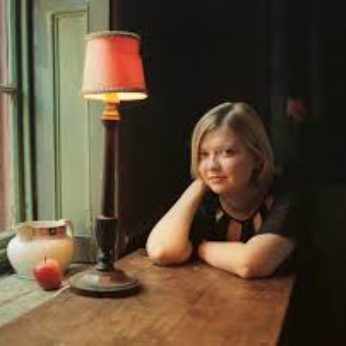Composer: Johann Sebastian Bach (b. 1685 - d. 1750)
Performance date: 27/06/2015
Venue: St. Brendan’s Church
Composition Year: 1720
Duration: 00:15:13
Recording Engineer: Richard McCullough, RTÉ lyric fm
Instrumentation Category:Small Mixed Ensemble
Instrumentation Other: vn (2vn,va,vc, db, lute, hpd)
Artists:
Alina Ibragimova -
[violin]
Arcangelo (Sophie Gent, James Toll [violins], Rebecca Jones [viola], Sarah McMahon [cello], Tim Amherst [bass], David Miller [lute], Jonathan Cohen [harpsichord,director]) -
[baroque ensemble]

The French philosopher Deleuze
described the aesthetic of the Baroque as being characterised by a thematic
folding; It twists and turns the folds,
takes them to infinity, fold upon fold, fold after fold. The characteristic of
the Baroque is the fold that goes on to infinity. In a musical idiom the
fold is the recurrence of the refrain, the ritornello,
a folding of time back upon itself. We are continuously drawn back to the
bedrock of the ritornello, the
nuances of its form cast into high relief by endlessly unfolding melodic
variations. Perhaps it is Bach’s mastery of the refrain, his ability to
reiterate melodic material subtly transmuted by the alchemical passage of time
that makes him an exemplary Master of the Baroque. In the space between Bach’s
folding refrains the infinite is deeply insinuated.
The opening Allegro
movement is characterised by some remarkably sunny passages. This joyous mood
is periodically juxtaposed with the darker sentiments latent in passages
elaborated in the relative minor. This slight unease is always short lived
however, and the concluding tutti passage is even more radiant than the first.
The Adagio is begun
with a sombre ensemble passage in sharp emotional contrast with the opening
movement. Its solemn sentiments are shortly taken up by the solo violin which
traces a deep meandering melody saturated with a profound sense of melancholy. We are led out of the movement with the same
throbbing passage with which we begun, its ambience strangely evocative of a
procession passing into the distance.
The cheerful opening phrases
of the Allegro assai movement make one feel that the sentiments of the
second movement are being deliberately contained in order to prevent their
potency from overflowing. Yet the solo violin passages still contain a certain
sense of urgency that seems increasingly ready to spill over into tragedy,
until firmly interrupted by the overwhelming positivity of the concluding tutti
section.
Copyright © 2024 West Cork Music. All rights reserved.
Designed and developed by Matrix Internet